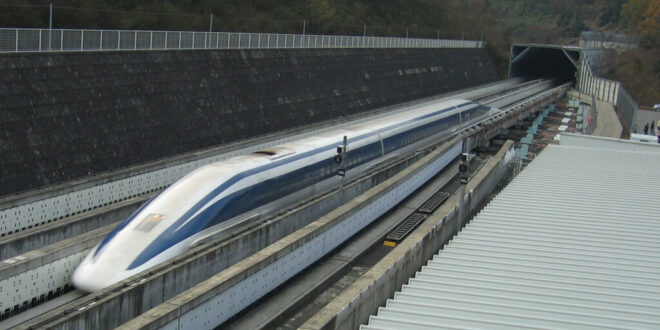Social media is frequently used to discuss the possibility of building a tunnel under the Atlantic Ocean that would connect the United States and Europe. This idea has been a popular one for more than a century. How close are we to realizing the dream of a tube train under the Atlantic Ocean? Or is it just that – a pipe dream?
The concept was first envisioned by Michel Verne in 1888 in his story An Express of the Future. Since then, it has developed from science fiction into a tantalising scientific possibility, even if it is still a distant one. Robert Goddard, the inventor of the liquid-fuelled first rocket and pioneer in space travel, patents a high-speed, vacuum-transport system. His design aimed for rapid acceleration and braking while minimising the friction by using non-magnetic techniques, such as fluid tension.
Transatlantic train tunnel: a thrilling thought
A train from Madrid to New York City in just over an hours time is a thrilling prospect. According to theoretical estimates a trip from New York to London could be completed in 54 minutes using vacuum trains that travel at a breathtaking 8,000 km/h. With current technology advancements such as the Hyperloop, we can only reach speeds of 1,200 km/h. Even if the trains could maintain this speed continuously, a transatlantic trip still would take four hours. That is a considerable improvement over the current travel time but still far from the 54 minute goal. The real-world test has not yet exceeded 600 km/h. Therefore, the 1,200km/h target is only a theoretical one.
The challenges are not just about speed. The world’s longest undersea tunnel so far, the Eurotunnel connecting England and France, stretches just under 40 km and needed six years, 13,000 workers, and approximately €16 billion (in today’s amounts) to build. Transatlantic tunnels would be 100 times longer. Eurotunnel has a maximum depth at 115m (377ft), but an Atlantic Tunnel would have to be at least 10 times deeper in order to traverse the ocean floor. The current engineering capabilities cannot build a strong structure that can withstand these conditions.
Is building a train tunnel across the Atlantic just a pipedream or a reality?
The sheer size of the project is another obstacle. A transatlantic bridge, which would be 30 times as long, is also impractical. The world’s largest bridge measures 164 km. Transatlantic tunnels are still an unattainable dream for now. Air travel is the fastest and most cost-effective way to cross Atlantic. The tunnel vision may become a reality in the future, but for now, air travel will remain the fastest and cheapest way to cross the Atlantic.
 Costa News Spain Breaking News | English News in Spain.
Costa News Spain Breaking News | English News in Spain.





